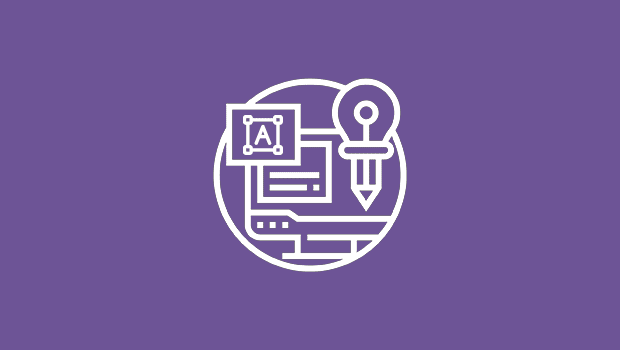dot-font: Paperback Reader

dot-font was a collection of short articles written by editor and typographer John D. Barry (the former editor and publisher of the typographic journal U&lc) for CreativePro. If you’d like to read more from this series, click here.
Eventually, John gathered a selection of these articles into two books, dot-font: Talking About Design and dot-font: Talking About Fonts, which are available free to download here. You can find more from John at his website, https://johndberry.com.
The humblest kinds of typography can be the most important. When I was a pre-teen in the early 1960s, buying cheap paperback adventure stories off the revolving wire racks at the local newsstand, I didn’t know a thing about the typefaces on those quickly printed pages. Nor did I care, as long as I could read the book. Without knowing it, I imprinted on the look of the small pages in pocket books from Ace Books and other mass-market publishers; they worked, they could be read, and unless the glue of the binding cracked, the physical book was doing its job. These were cheap books intended to fit into your back pocket (unlike the bloated blockbusters of today); they were barely larger than an iPod, and like that much higher-tech medium, they were supposed to be an easy way of carrying your content around with you so you could enjoy it where and when you wanted.
It wasn’t until changes in printing and typesetting technology reached Ace that I noticed the type. Suddenly, the book page was unreadable. What happened?
What happened was that the typesetting was now being done on phototypesetting machines, using watered-down phototype versions of the hot-metal typefaces that had worked so well on a Linotype. Instead of the solid book face Caledonia (Ace’s preferred text face for all their books), the text was being set in a phototype imitation—probably New Caledonia, Mergenthaler Linotype’s adaptation of its own typeface for the new technology. And suddenly the letters on the page looked anemic, thin and spindly and spotty, and it became a chore to read the book.
Put on Your Book Face
This is the problem that a number of type designers have been confronting for years: creating new typefaces that have the same effect in today’s digital printing technology that the old hot-metal faces had in the days of printing by letterpress. Rather than producing new versions of old faces, these type designers are creating new designs that draw on an old tradition. John Downer’s Paperback, newly released by House Industries, is one such face.

John Downer designed Paperback as a type family for books, especially mass-market paperbacks.
Paperback is not an imitation or revival of any existing typeface. “The romans have a rationalist axis,” says Downer; “the italics a humanist axis. Individual letterforms were constructed according to my own design philosophy and aesthetic sensibility, deliberately avoiding major historical influences.” Paperback clearly comes out of the same Scotch Roman tradition that W.A. Dwiggins drew on in creating Caledonia, and as a modern text face it aims to fill the same niche. But it’s original: “Glyph construction is idiosyncratic, as is my custom when I create letterforms in the digital realm.” You could say much the same of Dwiggins and his designs for hot metal.
Optical Sizes
Paperback is a text face, although it includes display variants. The family comes in six separate master designs, each adapted for a specific range of type sizes. “Paperback was conceived,” says Downer, “as a ‘Rough-and-Tumble’ text face for setting ordinary text sizes (8 point, 9 point, and 10 point) from one master font. I call this the 9-point master. It represents the core of the text series.” This is the version that House Industries calls Paperback 9.

Paperback 9: the basic text face of the Paperback family
“There are two other text masters: the 6-point master for sizes 5 point through 7 point, and the 12-point master for sizes 11 point through 13 point. Both were created to support the main idea of carefully breaking the text range into brackets.”
The differences between the optical sizes are subtle, but important: slightly thicker hairlines and larger x-heights in the smaller sizes, as you might expect, but also sharper angles that give curves an unexpected crispness.

Paperback’s six optical sizes, in the point sizes they’re meant for
Downer has created many of the curves and joins in the characters by using complex facets, a series of straight angles rather than a single smooth curve. The serifs, for instance, are constructed this way. These facets get subtler and less obvious in the larger designs, but they are an intrinsic part of the design at any size. (If you took the smallest master, Paperback 6, and blew it up to 100 point, the facets would become extremely obvious.)
“The trio of display masters covers a wider scope than the text masters, as they are intended for a greater range of uses,” says Downer. “The display fonts appear more refined, in terms of edge definition. However, in both the text range and the display range, distinct family traits are present in the construction of the letterforms.”

Faceted edges of an unusual ligature in Paperback italic
Works Hard in Poor Conditions
Paperback is clearly designed with a particular purpose in mind: to typeset small paperback books. In developing his designs, Downer did extensive research.
“Paperback text was designed and proofed over a period of four years to withstand the vagaries of high-speed printing on low-grade paper, two hallmarks for the ‘paperback novel’ medium. The standard format for a pocket-size paperback was taken into consideration. It’s a small page with justified text, modest margins, significant ink absorption, but usually poor quality ink. Tests were conducted on newsprint and other uncoated paper, both via web offset and photopolymer (letterpress). The faces are resilient in any printing environment, even in newspapers.”
Paperback is appealingly designed and easy to read. It cries out to be used at the smallest sizes, where Downer’s careful work is most evident. The only disadvantage of Paperback for its avowed purpose is that the letterforms are generously wide, so much so that you’d need to design a book page so that it had fairly long lines; otherwise, the number of words on a line might get too small, the word spaces too large, and the page as a whole could look choppy. This depends, of course, on the nature of the text itself; no typeface is appropriate for every book, and no size or leading or line length will work for every author. Paperback is not the least bit narrow or condensed, but it can be set quite small and still be clear and readable, which perhaps achieves the same end.

Small type for small books
The test will be to see how many books we find ourselves reading in Paperback in the next few years, and whether those books are designed so naturally that the author’s words come through without interference, and nobody notices the typeface at all.
This article was last modified on February 16, 2022
This article was first published on June 29, 2005




